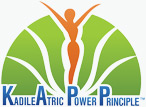Treatment for coronary artery disease CAD can range from simple to severe. While simple is always better and prevention is the best, most patients who look for information regarding chelation therapy have been through the severe forms of CAD treatment.
These treatments may have been stents, angioplasty or bypass surgery. In fact, these procedures have often been repeated multiple times. Imagine having your 2nd or 3rd bypass! Most of my chelation patients say to me, “Doc, I’ll never go through that again”. Do you want to go through another one of these procedures?
While coronary bypass surgery can relieve the symptoms, the recovery and risks can be major problems.
It’s important that you know coronary bypass surgery doesn’t cure the underlying disease process. This is even stated on the Mayo Clinic website regarding RESULTS http://www.mayoclinic.com/health/coronary bypass-surgery/HB00022
Overtime unless serious lifestyle changes are made and fate is at your side ….other arteries or even the new bypass will be clogged and another bypass or angioplasty is needed.
Most patients don’t have time to read and research other options before being whisked away for emergency bypass surgery. Their doctor and their family members are telling them they have no choice or they are not even in the physical and emotional state to make a choice.
The purpose of this informational site on chelation is to empower you with information, “knowledge is power” regarding this therapy whether you:
- Already had a heart attack
- Already had a stent
- Already had an angioplasty
- Already had a bypass or 2 or 3
- Already have been told you are at great risk and bypass is in your future
The intention of this site is to have you look at the data and then consider your options.
It’s your life, it’s your health, it’s your pain. It’s only YOU who can decide.
Take time to look at the published data because there are many unanswered questions and events regarding heart attack and stroke.






